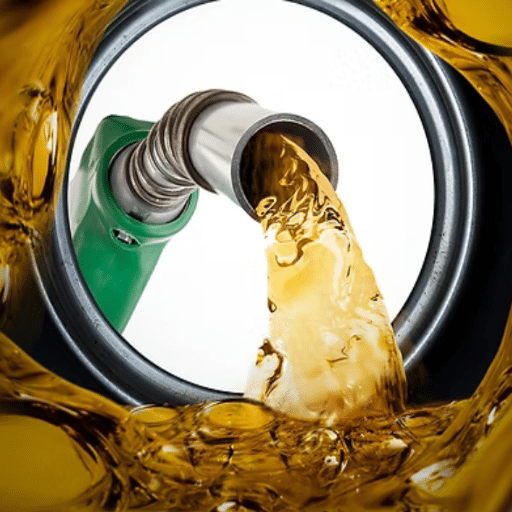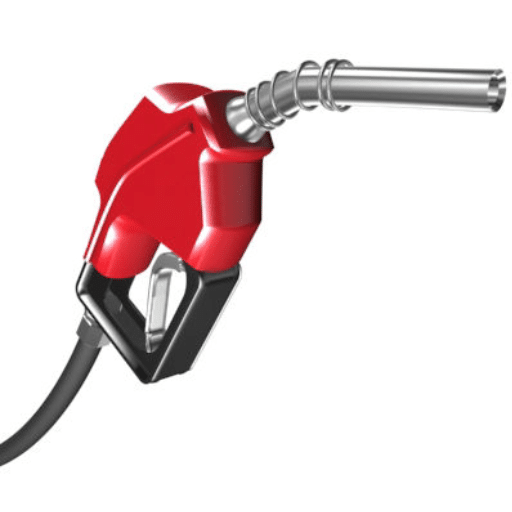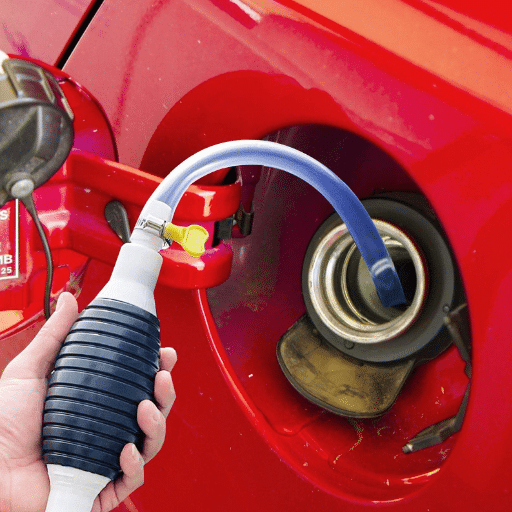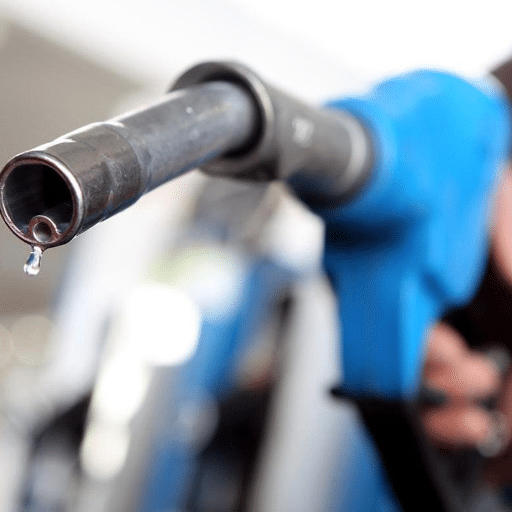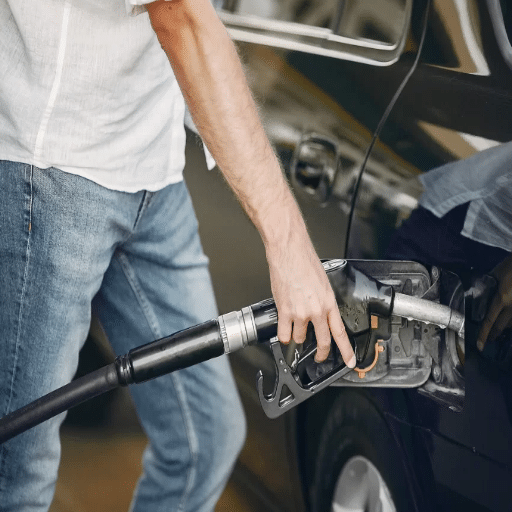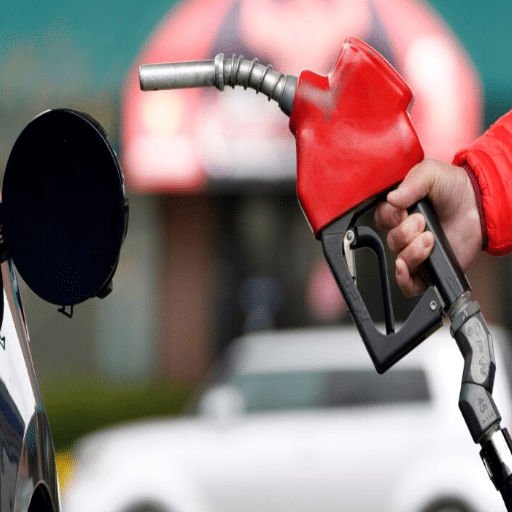The Vapor Recovery Nozzle System holds a prominent place in today’s fuel dispensing technology, striking a balance between environmental concerns and an efficient fuel delivery system. The system captures harmful gas vapors released during refilling and prevents them from escaping into the atmosphere, thereby reducing harmful emission levels. How is this done? And why does it matter so much in these times? This article will discuss Vapor Recovery Nozzles— Their components, working principle, and environmental implications —so that readers can understand their importance in ecological sustainability and regulatory compliance. Any casual consumer or established professional in the fuel business will find rich value in this guide about this little-known yet essential technology.
What is a Vapor Recovery Nozzle?
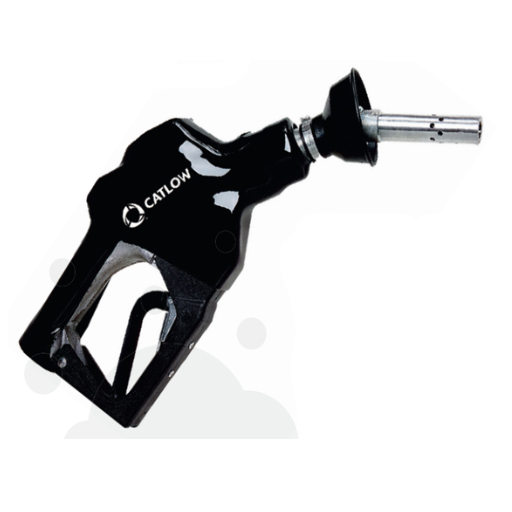
A vapor recovery nozzle is an innovative tool used at fuel pumps to capture gasoline vapors that would otherwise escape into the atmosphere during the refueling process. It directs these vapors back into the storage tank, thereby eliminating harmful pollutants from entering the atmosphere. The technology is designed to limit atmospheric pollution, reduce health hazards associated with inhaling toxic fumes, and comply with environmental laws. By efficiently containing vapors, vapor recovery nozzles ensure cleaner air and a greener environment.
Definition and Functionality
Vapor recovery nozzles are essential components of any vapor recovery system installed at fuel dispensing stations. These systems are designed to capture 95% of fuel vapors that would otherwise be released into the atmosphere, thereby significantly minimizing VOC emissions. This alternative is used to fight ground-level ozone, which is mainly associated with urban smog. The modern systems ensure complete containment and redirection of vapors back to storage tanks, employing advanced technologies such as Stage I and Stage II vapor recovery methods.
Recent advances have revealed that vapor recovery technologies have also been further developed for increased efficiency and automation. For example, smart sensors are embedded within modern systems that can monitor and adjust recovery rates in real-time to maximize recovery efficiencies while minimizing emissions. It is estimated that the installation of top-notch vapor recovery systems in fuel stations could reduce VOC emissions by several million tons annually, thereby contributing to a cleaner urban environment. These developments demonstrate how vapor recovery nozzles have evolved to meet stringent environmental regulations and international emission standards.
Components of a Vapor Recovery Nozzle
A vapor recovery nozzle is an advanced device designed to minimize the release of harmful VOCs during fuel dispensing operations. It comprises many parts, with each playing a vital role in ensuring the proper capture of vapors and complying with environmental regulations.
Nozzle Body: The main body of the nozzle, usually made of either aluminum or composite plastic, offers housing for the internals and accommodates dispensing under high pressure.
Vapor Collection Boot: This component is made of some flexible rubber-like material that creates a seal around the fuel tank inlet of the vehicle, forming a tight connection that captures displaced fuel vapors as the tank is being filled. Studies show that modern vapor collection boots are capable of capturing over 95% of fuel vapors at each stage of refueling.
Check Valve: It is an essential safety feature preventing fuel from spilling out of the nozzle or flowing backward. It also helps to control the flow of vapors entering the recovery system.
Vacuum Assist System: This is usually incorporated into most vapor recovery nozzles, where a pump mechanism sucks the displaced vapors into the storage tanks. Studies have shown that such systems significantly improve the recovery of vapors, achieving compliance levels set by the strictest regulatory bodies, such as CARB in California.
Flow Control Mechanism: A flow control mechanism enables the automatic shut-off of the nozzle to avoid overflow when the vehicle tank is full. The mechanism not only ensures safety but also actively limits vapor releases during fueling.
Vapor Recovery Lines: A maze of little channels and/or hoses within the nozzle helps carry the recovered vapors back to the underground storage tanks, thus reducing emissions into the atmosphere at the pump.
Current advancements in materials and sensor technologies are constantly improving the life and efficiency of these components. For instance, some may now be equipped with pressure sensors to optimize vapor recovery in real-time. Indeed, these developments greatly help maintain this kind of nozzle at the forefront in the drive to reduce emissions from vehicles and provide a cleaner and healthier environment.
How Vapor Recovery Nozzles Work
Vapor recovery nozzles work by catching fumes released in refueling and preventing their escape into the atmosphere. A seal is formed between the nozzle and the vehicle tank during fuel filling. This seal allows vapors to be siphoned into a tube and returned to the fuel storage system, rather than releasing them into the atmosphere.
Modern-day nozzles utilize state-of-the-art pressure sensing systems, enabling them to detect changes in vapor levels and thereby optimize the recovery process. These systems, according to recent studies, are capable of recovering 95% of gasoline vapors, thereby significantly reducing pollution and fuel losses. Additionally, high-grade materials provide the necessary resistance against wear and tear, making them suitable for long-term use, even when used daily.
The vacuum assist system further maximizes the cooling gains. Such systems actively draw in the vapors while dispensing fuel, rather than passively waiting for vapors released during refueling. According to data from environmental monitoring agencies, a decrease in ground-level ozone formation rates, which significantly alleviates urban smog, is reported after the widespread adoption of these technologies. By combining precision engineering with stringent environmental regulations, vapor recovery nozzles continue to play a crucial role in mitigating the impact of fuel emissions.
The Science Behind Vapor Recovery Nozzles
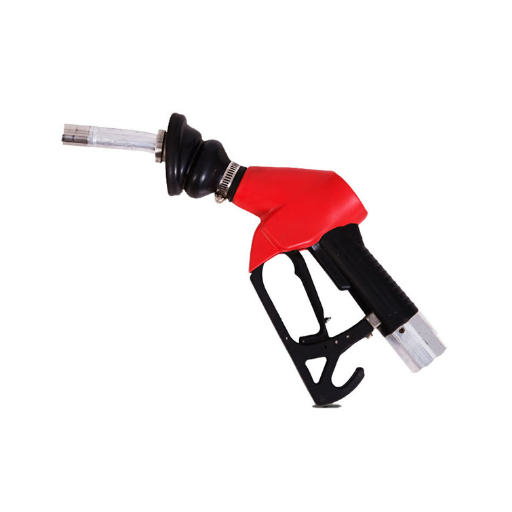
Most of the refueling-related fuel vapors are harmful to the environment if released into the air; thus, the vapor recovery nozzles capture these vapors so they do not escape. It operates on a sealed system in which the vapors are collected and routed back into the storage tank instead of being dispersed into the atmosphere. The nozzle is equipped with associated mechanisms to connect securely with the fuel tank, ensuring minimal leakage. These nozzles rank among the most effective tools for preventing air pollution and the release of volatile organic compounds (VOCs), which can contribute to the creation of smog and have health effects.
How Vapor Recovery Nozzles Work
In the process of harmful fuel vapor emissions during vehicle refueling, the vapor recovery nozzles come into operation to capture them. A combination of mechanical and vacuum systems operates these nozzles. When inserted into a vehicle’s fuel tank, a tight seal is formed, preventing any vapor from escaping into the environment. At the same time, the system utilizes a vacuum pump or a pressure difference to essentially draw vapor back into the storage tank, preventing volatile organic compounds (VOCs) from being emitted into the atmosphere, thereby significantly reducing environmental pollution and health hazards. Today, several state-of-the-art vapor recovery systems exist that enable near-total removal of vapor emissions, providing a prime example of emissions control at a refueling station.
Technological Innovations in Vapor Recovery
The enhancements in vapor recovery systems over the past few years have improved efficiency and addressed environmental concerns. Among the developments are Stage II vapor recovery systems, with advanced sensors and automation. Such systems are capable of accurately monitoring fuel vapor emissions in real-time, allowing them to adjust and thereby maximize recovery rates while minimizing leakage automatically.
Following this, the introduction of IoT technology led to a transformation in the operations of vapor recovery systems. The system enabled IoT-enabled and remote monitoring services, along with predictive maintenance, thereby reducing downtime. An industry report states that IoT-empowered vapor recovery systems increase operational efficiency by at least 25%, thereby reducing the operational costs of fuel stations without compromising emissions compliance.
Another area of interest for improvements is the implementation of carbon adsorption units of higher efficiency. These utilize advanced materials, such as activated carbon or metal-organic frameworks (MOFs), for capturing and storing fuel vapors. Research studies have shown that these materials provide an enhancement of more than 90% in vapor recovery efficiency, even in challenging environmental conditions.
Additionally, because a more intelligent approach is adopted for these functions, electric vacuum pumps have begun to replace traditional mechanical vacuum systems. They offer a solution that is more sustainable and economically viable due to its greater durability, quiet operation, and low energy consumption.
These innovations demonstrate the numerous improvements the industry strives to introduce to vapor recovery systems, making them both environmentally acceptable and economically viable.
Environmental Benefits of Vapor Recovery Nozzles
The purpose of vapor recovery nozzles is to prevent environmental pollution. At a more specific level, they prevent the evaporation of VOCs during fuel transfer. Industry analysts have noted that these nozzles can trap nearly 95% of fuel vapors, thereby significantly reducing emissions that contribute to the creation of ground-level ozone and smog.
As an ozone precursor itself, reducing VOCs would improve air quality, while also contributing to climate change mitigation by lowering greenhouse gas emissions. Also, vapor recovery nozzles prevent fuel waste, entailing an efficient resource-consumption practice. Several studies have found that the large-scale deployment of such mechanisms in fuel stations could potentially block thousands of tons of VOCs from being emitted into the atmosphere each year, thereby reducing health hazards associated with air pollution and advancing global clean air abatement efforts.
Ecological Impact of Vapor Recovery Systems
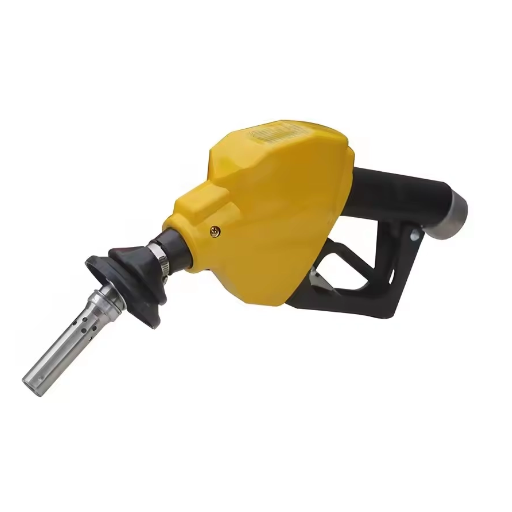
Vapor recovery systems regulate the emission of VOCs into the atmosphere, thereby enhancing air quality and reducing pollution. With the capacity to capture and reuse these vapors, they minimize the impact of harmful greenhouse gases, defending against climate change. They conserve resources by preventing fuel loss, so the system is environmentally friendly. Globally, the use of vapor recovery technology will significantly contribute to promoting clean air and a healthy ecosystem.
Reducing Emissions
Globally, industries and governments are prioritizing the reduction of emissions, and the use of innovative technology is crucial in achieving this goal. Emissions-wise, approximately 73% of global greenhouse gases are attributed to energy generation, primarily resulting from the combustion of fossil fuels. The uptake of wind, solar, and hydropower-based renewable energy, therefore, has grown significantly. For example, in 2022, renewable energy accounted for nearly 30% of the global electricity mix, whereas it had been barely present on the scene in prior decades.
As a significant source of emissions, the transportation sector is undergoing rapid transformation with the increasing adoption of electric vehicles (EVs). Apart from registering a record high of 10 million units sold globally in 2022, EVs have surpassed internal combustion engines, which contribute significantly to carbon dioxide and pollutant emissions. Furthermore, the industrial sector utilizes carbon capture and storage (CCS) technology, which can capture up to 90% of CO2 emissions from industrial processes and power generation.
Agriculture, accounting for about 18% of global emissions, is further undergoing a sustainable transformation by adopting measures such as precision farming and low-emission fertilizers.` Together, these illustrate the working technology and innovation that create a significant impact in addressing climate challenges. Still, better policies and more purposeful investments, coupled with international collaboration, remain the key to achieving net-zero emissions within the coming decades.
Benefits to Air Quality
The topic of improving air quality has been addressed through several notable impacts on public health and the environment. The emission of pollutants from energy generation plants, particularly nitrogen oxides (NOx) and sulfur dioxide (SO2), is mainly responsible for the formation of smog and acid rain. Through clean energy technologies, reductions in PM2.5 levels have been documented in regions associated with the clean energy conversion of fossil fuel plants, with PM2.5 being considered one of the primary pollutants that cause respiratory and cardiovascular ailments.
A new chapter has opened with developments in the electric vehicle (EV) industry, thereby bringing an end to urban air pollution caused by car movement. Estimates suggest that widespread EV adoption may reduce greenhouse gas emissions from the transportation sector by half. Also relevant are policies that promote sustainable agricultural practices, which reduce emissions from fertilizers and thereby benefit air quality in rural areas.
The green initiatives referred to above include reforestation and the creation of green spaces, which can trap airborne pollutants and thereby clean the air for city residents. Studies have found that tree canopies in urban settings can reduce particulate matter pollution by almost 25%, rendering the presence of such spaces crucial to enhancing urban air quality. Altogether, these efforts demonstrate how innovative practices and policies can mitigate climate change while targeting immediate improvements in the air we all breathe.
Regulatory Compliance
Regulatory compliance is a crucial tool for addressing environmental challenges and ensuring sustainability. Various governments and industries worldwide have implemented stringent regulations to reduce emissions and pollution levels. For example, the Industrial Emissions Directive of the European Union requires that large industrial plants limit their pollutant emissions; thus, it is possible to feel proud that SO₂ emissions have declined by about 75% between 1990 and 2020.
Similarly, the landmark Clean Air Act in the United States has led to a significant reduction in air pollution, with studies indicating that carbon monoxide concentrations have decreased by more than 85% since 1990. According to numerous laws, manufacturers and vehicle operators are now required to use advanced monitoring technologies for testing pollutant concentrations in real-time, thereby strengthening the enforcement of emission standards.
This effort toward compliance strengthens the international cooperation pursued under the Paris Agreement, in which countries agree to undertake specific voluntary measures to mitigate climate change. For instance, one key topic of discussion under mitigation measures is the transition to renewable energy, with renewable energy sources meeting nearly 30% of global electricity demand in 2022. Through the incorporation of stringent standards with clear indicators and continuous scientific and technological advancements, the regulatory regime continues to bring about significant improvements in addressing environmental degradation and enhancing air quality on the global stage.
Knowledge and Science Behind Vapor Recovery Technology
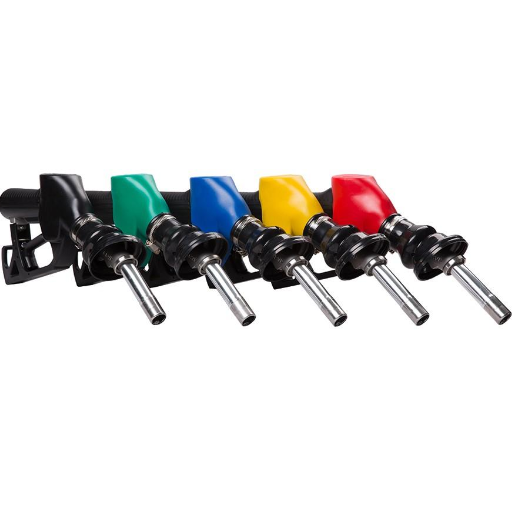
The technology of vapor recovery is designed to capture and reuse vapors that would otherwise be released into the atmosphere during the storage and transfer of fuel. Essentially, vapor recovery utilizes systems such as VRUs or other devices that effectively collect volatile organic compounds (VOCs) from these vapors. These vapors, once captured, can be condensed or processed for reuse, thereby reducing emissions and their environmental impact. By stopping the release of harmful VOCs and thereby improving air quality, vapor recovery technology also helps comply with environmental regulations aimed at further reducing pollution.
Principles of Vapor Recovery
Vapor recovery systems employ the most basic design principle: capturing vapors before they escape into the atmosphere. Their processes might involve adsorption, absorption, condensation, or even membrane separation to ensure the efficient recovery of volatile organic compounds. Adsorption employs specific materials, such as activated carbon, to trap gas molecules, whereas absorption is the process of dissolving vapors into the liquid phase. Condensation involves cooling down heat-laden vapor streams to liquefy them for reuse.
One of the main trends advanced in vapor recovery is the increasing installation of VRUs in industries such as oil and gas, chemical production, and fuel storage terminals. Data show that VRUs can recover 95-98 percent of VOC emissions, thus significantly reducing environmental harm and simultaneously improving resource efficiency. Additionally, recent studies indicate that vapor recovery can yield significant financial benefits for industries by capturing fuel vapors that would otherwise be lost. In oil and gas applications, for instance, a well-optimized VRU can recover thousands of barrels of fuel annually, equivalent to millions of dollars in value.
Modern systems also feature digital monitoring and automation, allowing real-time tracking of emission levels and system performance—a step further towards reinforcing operational efficiency and facilitating compliance with stringent environmental standards, thereby playing an even greater role in reducing the ecological footprint of industries dealing with volatile substances. Therefore, with these developments, vapor recovery technology continues to evolve as a crucial solution for a cleaner and more sustainable industrial practice.
Innovations in Vapor Recovery Nozzle Design
Recent developments in the design of vapor recovery nozzles have primarily focused on enhancing efficiency, durability, and ease of use, while also reducing environmental impact. In present designs, advanced sealing devices are used to ensure no fuel vapors escape during refueling. They utilize materials of the highest quality, assuring their resistance to wear and tear, withstanding long-term performance in harsh environments.
Ergonomics, however, is prioritized second to enhanced user experience. Lightweight components, combined with ergonomically contoured handles, minimize operator fatigue, facilitating easy handling of these nozzles at busy fueling stations. Some nozzles also feature onboard sensors to measure recovery efficiency, enabling the immediate detection of any malfunctions or leaks.
Statistics based on industry standards indicate that modern nozzle models typically achieve a virtually 95 percent recovery of fuel vapor emissions, thereby greatly reducing the release of harmful volatile organic compounds (VOCs) into the atmosphere. These innovative nozzle systems enhance vapor capture without compromising fueling speed, thereby serving the dual objectives of environmental preservation and efficiency.
Future Trends in Vapor Recovery Systems
Looking forward, such trends in vapor recovery systems are mostly expected to be primarily defined by advanced automation and AI-based optimization. This will help achieve better control of the vapor capture process, minimizing environmental impact. I further envision IoT-enabled integration for real-time monitoring and predictive maintenance, thereby lessening downtime and enhancing efficiency. Given the introduction of better materials and designs, new systems of even greater durability and performance at a lower cost will undoubtedly emerge. Such innovations will thus, in effect, answer stricter environmental laws and a more serious commitment to sustainability.
Vapor Recovery Nozzle Real-World Applications
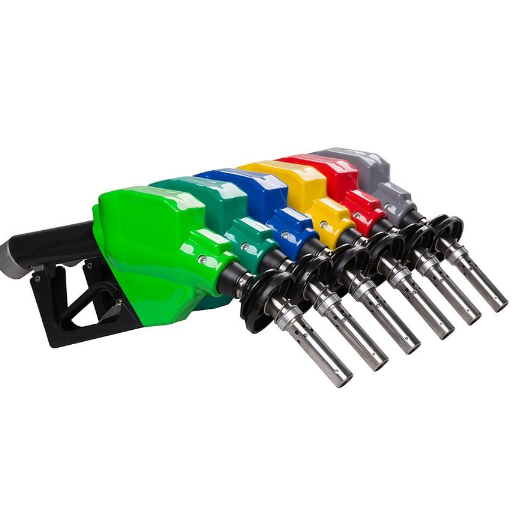
During the refilling process, vapor recovery nozzles minimize any harmful vapors from being released into the atmosphere. These nozzles are an absolute necessity in an urban scenario where air quality regulations are stringent. They are also used in industrial settings, such as chemical plants and storage facilities, to capture VOCs, thereby preventing environmental contamination and ensuring a safe workplace. Their integration promotes chemical and other industrial regulatory compliance while also supporting sustainable industrial practices.
Industries Utilizing Vapor Recovery Nozzles
1. Petroleum and Gas Stations: Vapor recovery nozzles are commonly applied in the fuel dispensing industry to halt VOC emissions during vehicle refueling. Industry reports say that a typical gas station may emit 1,500 gallons of gasoline vapors yearly without having vapor recovery installations. These nozzles ensure adherence to environmental laws that promote air quality in cities and suburban areas.
2. Chemical and Petrochemical Plants: Such nozzles serve a crucial function within chemical plants, where the handling and storage of volatile liquids can lead to the emission of harmful gases. Studies have shown that the installation of vapor recovery systems can reduce VOC emissions by up to 95 percent, thereby improving the safety of the working environment and reducing environmental degradation.
3. Industrial Storage Facilities: The large storage tanks contain fuels, chemicals, or other volatile materials, and at the same time, they are a source of vapor emissions. Integrated with storage systems, the vapor nozzle recovery prevents product losses from vapors while maintaining adherence to regulations. According to data, such technologies have the potential to save companies millions of dollars in lost vapor recovery annually.
4. Transportation and Maritime Industry: Tank trucks and ships transporting volatile liquids use vapor recovery system technologies to capture emissions during loading and unloading. For vessels carrying crude oil or refined petroleum products, sophisticated vapor recovery technologies are applied to comply with stringent international standards such as those outlined by the International Maritime Organization (IMO).
5. Pharmaceuticals and Food Processing: Vapor recovery nozzles are offered for solvent, ethanol, and other volatile substances in the pharmaceutical and food industries, which improves product efficiency and reduces exposure to harmful emissions. Recent industrial review data indicate a sharp increase in demand for vapor recovery systems in these sectors, as companies strive to meet their sustainability commitments.
These versatile nozzles ensure regulatory compliance, providing substantial long-term savings and environmental benefits across multiple industries. Their further adoption is proof of the growing significance of sustainable and environmentally friendly technologies in industrial applications.
Case Studies: Successful Implementation
Case Study 1: The Oil and Gas Industry: An oil and gas company installed vapor recovery systems to control emissions during storage and transfer operations. Equipped with high-efficiency vapor recovery nozzles, the facility successfully reduced its VOC emissions by 95%. The solution met stringent environmental regulations and captured approximately 3,500 metric tons of hydrocarbons annually, which were then reused in the plant. This resulted in annual cost savings of over $1.2 million while significantly reducing the environmental impact.
Case Study 2: Chemical Manufacture – A central chemical plant recognized the opportunity to enhance its sustainability profile by installing vapor recovery equipment in its production processes. The installation of these nozzles enabled the plant to recover more than 7 tons of vaporized chemicals each month, decreasing raw material loss and enhancing operational efficiency. With total annual savings of approximately $850,000, the investment in vapor recovery nozzles paid for itself within 18 months. Furthermore, the company’s emissions decreased by 30% after adopting these systems, in line with their other sustainability initiatives.
Case Study 3: Fuel Distribution Terminals – Fuel distribution terminals are often severely prone to hydrocarbon vapor losses during loading and unloading operations. One terminal set up vapor recovery systems for its truck loading racks and successfully reduced VOC emissions by 98%. Approximately four metric tons of harmful vapors were prevented from being released into the atmosphere each month. These operational upgrades indeed yielded environmental dividends, resulting in increased compliance and, in addition, recovering precious fuel, which created an extra $600,000 in annual revenue.
Each of these case studies demonstrates how vapor recovery systems can be leveraged to enhance operating efficiencies, reduce emissions, and generate economic value for industries across a diverse range of sectors. Due to their versatility and efficacy, these systems are the cornerstone of achieving both regulatory compliance and sustainability goals.
Future Trends in Vapor Recovery Technology
With automation, digitization, and greener processes leading the charge, new vapor recovery systems are a trend yet to unfold. One of these trends includes the advancement of IoT in vapor recovery systems. Innovative technologies can thus monitor emissions in real-time, execute the recovery process efficiently, and give predictive maintenance data, hence maximizing uptime for operators.
Another trend gaining momentum involves the use of advanced materials and nanotechnology for vapor separation and recovery. New adsorbent materials are being developed with larger surface areas and higher chemical resistance to capture a wider class of VOCs.
Data science-based optimization increases alongside machine learning and AI. These approaches are advised to consider working parameters to enhance system performance, predict system failure, and suggest adjustments to workflows to increase recovery yields. This way, and through this unique innovation, industries can tailor their approach to meet stringent environmental regulations without compromising their cost structure.
In addition, there is an increased emphasis on scalable and modular VRUs for small- and medium-scale operations. Such designs provide flexibility at reduced installation and operational costs, making vapor recovery solutions feasible in various industrial sectors.
According to industry reports, the global vapor recovery units market is expected to experience significant growth over the next decade, driven by increasing environmental consciousness and stricter emission standards. North America and Europe will remain the major players due to their forward-looking regulatory frameworks, while emerging markets in the Asia-Pacific show greater acceptance as industries modernize and adopt cleaner technologies.
In harmony with these trends, vapor recovery systems are poised for further expansion in the industry, driven by economic and environmental goals that aim to achieve greener and more sustainable practices.
Reference Sources
1. Condensation Properties of Water Vapor Under Different Back Pressures in Nozzles
2. Investigation of Cavitation and Vapor Shedding Mechanisms in a Venturi Nozzle
3. Enhancing Steam Flow Efficiency Through Fine Droplet Injection in Nozzles
Frequently Asked Questions (FAQs)
What is a vapor recovery nozzle?
A vapor recovery nozzle is a specialized device used at fuel dispensing stations to capture vapors that are released during the refueling process. This nozzle helps to minimize the emission of volatile organic compounds (VOCs) into the atmosphere, thereby reducing air pollution and improving environmental conditions.
How does a vapor recovery nozzle work?
The vapor recovery nozzle works by using a combination of mechanical and passive systems to collect vapors that would otherwise escape into the air. When fuel is dispensed, the nozzle captures the vapors that are displaced from the tank and directs them back into the storage tank through a dedicated vapor return line.
Why is vapor recovery significant?
Vapor recovery is crucial as it helps to reduce harmful emissions that contribute to air pollution and ozone formation. By capturing and recycling fuel vapors, vapor recovery systems minimize the environmental impact of fuel dispensing operations and help comply with regulatory standards for air quality.
What are the benefits of using a vapor recovery nozzle?
Using a vapor recovery nozzle offers several benefits, including reduced environmental impact, compliance with environmental regulations, improved air quality, and potential cost savings for fuel retailers through reduced product loss. Additionally, it can enhance the safety of the refueling process by preventing vapor buildup.
Are there different types of vapor recovery nozzles?
Yes, there are two main types of vapor recovery nozzles: the balance system and the assist system. The balance system relies on equal pressure between the storage tank and the nozzle, whereas the assist system utilizes a vacuum pump to draw vapors back into the tank actively. Each type has its specific applications and advantages.
What maintenance is required for vapor recovery nozzles?
Regular maintenance of vapor recovery nozzles is essential to ensure their proper functioning. This includes routine inspections for leaks, checking the integrity of hoses and connections, cleaning filters, and ensuring that the vapor recovery system is free from blockages. Adhering to manufacturer guidelines for maintenance will help optimize performance.
Can vapor recovery nozzles be retrofitted to existing fuel dispensers?
Yes, vapor recovery nozzles can often be retrofitted to existing fuel dispensers. This upgrade can help fuel stations comply with current environmental regulations and enhance their sustainability practices. It is advisable to consult with a professional to determine compatibility and the best approach for installation.
What regulations govern the use of vapor recovery nozzles?
The use of vapor recovery nozzles is subject to various federal, state, and local environmental regulations aimed at controlling air pollution. These regulations may dictate the type of vapor recovery system required, as well as maintenance and testing protocols to ensure compliance with emissions standards.

